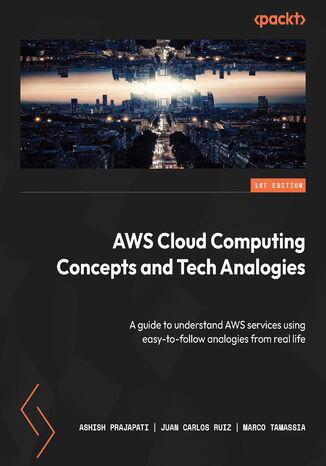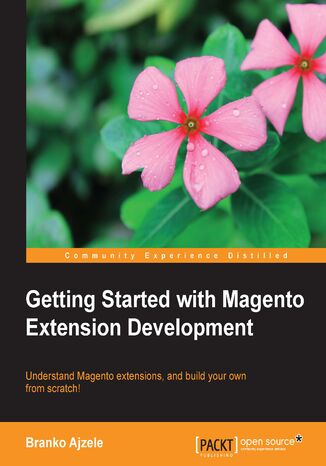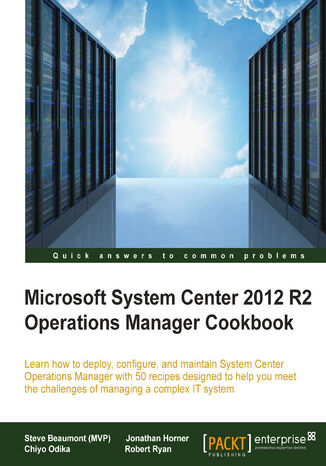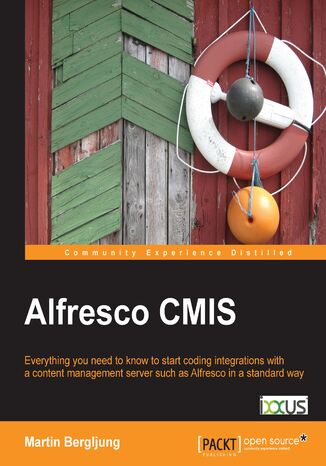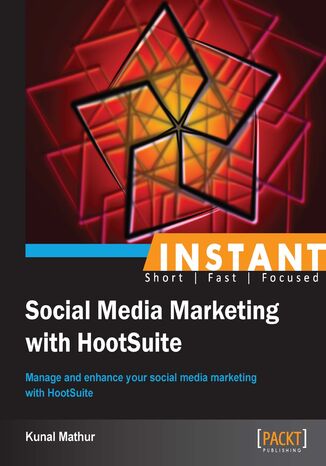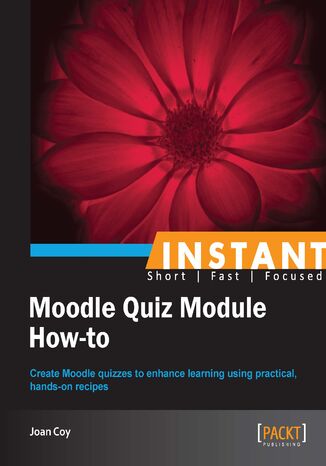Категорії
Електронні книги
-
Бізнес та економіка
- Біткойн
- Ділова жінка
- Коучинг
- Контроль
- Електронний бізнес
- Економіка
- Фінанси
- Фондова біржа та інвестиції
- Особисті компетенції
- Комп'ютер в офісі
- Комунікація та переговори
- Малий бізнес
- Маркетинг
- Мотивація
- Мультимедійне навчання
- Нерухомість
- Переконання та НЛП
- Податки
- Соціальна політика
- Порадники
- Презентації
- Лідерство
- Зв'язки з громадськістю
- Звіти, аналізи
- Секрет
- Соціальні засоби комунікації
- Продаж
- Стартап
- Ваша кар'єра
- Управління
- Управління проектами
- Людські ресурси (HR)
-
Для дітей
-
Для молоді
-
Освіта
-
Енциклопедії, словники
-
Електронна преса
- Architektura i wnętrza
- Безпека життєдіяльності
- Biznes i Ekonomia
- Будинок та сад
- Електронний бізнес
- Ekonomia i finanse
- Езотерика
- Фінанси
- Особисті фінанси
- Бізнес
- Фотографія
- Інформатика
- Відділ кадрів та оплата праці
- Для жінок
- Комп'ютери, Excel
- Бухгалтерія
- Культура та література
- Наукові та академічні
- Охорона навколишнього середовища
- Впливові
- Освіта
- Податки
- Подорожі
- Психологія
- Релігія
- Сільське господарство
- Ринок книг і преси
- Транспорт та спедиція
- Здоров'я та краса
-
Історія
-
Інформатика
- Офісні застосунки
- Бази даних
- Біоінформатика
- Бізнес ІТ
- CAD/CAM
- Digital Lifestyle
- DTP
- Електроніка
- Цифрова фотографія
- Комп'ютерна графіка
- Ігри
- Хакування
- Hardware
- IT w ekonomii
- Наукові пакети
- Шкільні підручники
- Основи комп'ютера
- Програмування
- Мобільне програмування
- Інтернет-сервери
- Комп'ютерні мережі
- Стартап
- Операційні системи
- Штучний інтелект
- Технологія для дітей
- Вебмайстерність
-
Інше
-
Іноземні мови
-
Культура та мистецтво
-
Шкільні читанки
-
Література
- Антології
- Балада
- Біографії та автобіографії
- Для дорослих
- Драми
- Журнали, щоденники, листи
- Епос, епопея
- Нарис
- Наукова фантастика та фантастика
- Фельєтони
- Художня література
- Гумор, сатира
- Інше
- Класичний
- Кримінальний роман
- Нехудожня література
- Художня література
- Mity i legendy
- Лауреати Нобелівської премії
- Новели
- Побутовий роман
- Okultyzm i magia
- Оповідання
- Спогади
- Подорожі
- Оповідна поезія
- Поезія
- Політика
- Науково-популярна
- Роман
- Історичний роман
- Проза
- Пригодницька
- Журналістика
- Роман-репортаж
- Romans i literatura obyczajowa
- Сенсація
- Трилер, жах
- Інтерв'ю та спогади
-
Природничі науки
-
Соціальні науки
-
Шкільні підручники
-
Науково-популярна та академічна
- Археологія
- Bibliotekoznawstwo
- Кінознавство / Теорія кіно
- Філологія
- Польська філологія
- Філософія
- Finanse i bankowość
- Географія
- Економіка
- Торгівля. Світова економіка
- Історія та археологія
- Історія мистецтва і архітектури
- Культурологія
- Мовознавство
- літературні студії
- Логістика
- Математика
- Ліки
- Гуманітарні науки
- Педагогіка
- Навчальні засоби
- Науково-популярна
- Інше
- Психологія
- Соціологія
- Театральні студії
- Богослов’я
- Економічні теорії та науки
- Transport i spedycja
- Фізичне виховання
- Zarządzanie i marketing
-
Порадники
-
Ігрові посібники
-
Професійні та спеціальні порадники
-
Юридична
- Безпека життєдіяльності
- Історія
- Дорожній кодекс. Водійські права
- Юридичні науки
- Охорона здоров'я
- Загальне, компендіум
- Академічні підручники
- Інше
- Закон про будівництво і житло
- Цивільне право
- Фінансове право
- Господарське право
- Господарське та комерційне право
- Кримінальний закон
- Кримінальне право. Кримінальні злочини. Кримінологія
- Міжнародне право
- Міжнародне та іноземне право
- Закон про охорону здоров'я
- Закон про освіту
- Податкове право
- Трудове право та законодавство про соціальне забезпечення
- Громадське, конституційне та адміністративне право
- Кодекс про шлюб і сім'ю
- Аграрне право
- Соціальне право, трудове право
- Законодавство Євросоюзу
- Промисловість
- Сільське господарство та захист навколишнього середовища
- Словники та енциклопедії
- Державні закупівлі
- Управління
-
Путівники та подорожі
- Африка
- Альбоми
- Південна Америка
- Центральна та Північна Америка
- Австралія, Нова Зеландія, Океанія
- Австрія
- Азії
- Балкани
- Близький Схід
- Болгарія
- Китай
- Хорватія
- Чеська Республіка
- Данія
- Єгипет
- Естонія
- Європа
- Франція
- Гори
- Греція
- Іспанія
- Нідерланди
- Ісландія
- Литва
- Латвія
- Mapy, Plany miast, Atlasy
- Мініпутівники
- Німеччина
- Норвегія
- Активні подорожі
- Польща
- Португалія
- Інше
- Przewodniki po hotelach i restauracjach
- Росія
- Румунія
- Словаччина
- Словенія
- Швейцарія
- Швеція
- Світ
- Туреччина
- Україна
- Угорщина
- Велика Британія
- Італія
-
Психологія
- Філософія життя
- Kompetencje psychospołeczne
- Міжособистісне спілкування
- Mindfulness
- Загальне
- Переконання та НЛП
- Академічна психологія
- Психологія душі та розуму
- Психологія праці
- Relacje i związki
- Батьківство та дитяча психологія
- Вирішення проблем
- Інтелектуальний розвиток
- Секрет
- Сексуальність
- Спокушання
- Зовнішній вигляд та імідж
- Філософія життя
-
Релігія
-
Спорт, фітнес, дієти
-
Техніка і механіка
Аудіокниги
-
Бізнес та економіка
- Біткойн
- Ділова жінка
- Коучинг
- Контроль
- Електронний бізнес
- Економіка
- Фінанси
- Фондова біржа та інвестиції
- Особисті компетенції
- Комунікація та переговори
- Малий бізнес
- Маркетинг
- Мотивація
- Нерухомість
- Переконання та НЛП
- Податки
- Соціальна політика
- Порадники
- Презентації
- Лідерство
- Зв'язки з громадськістю
- Секрет
- Соціальні засоби комунікації
- Продаж
- Стартап
- Ваша кар'єра
- Управління
- Управління проектами
- Людські ресурси (HR)
-
Для дітей
-
Для молоді
-
Освіта
-
Енциклопедії, словники
-
Електронна преса
-
Історія
-
Інформатика
-
Інше
-
Іноземні мови
-
Культура та мистецтво
-
Шкільні читанки
-
Література
- Антології
- Балада
- Біографії та автобіографії
- Для дорослих
- Драми
- Журнали, щоденники, листи
- Епос, епопея
- Нарис
- Наукова фантастика та фантастика
- Фельєтони
- Художня література
- Гумор, сатира
- Інше
- Класичний
- Кримінальний роман
- Нехудожня література
- Художня література
- Mity i legendy
- Лауреати Нобелівської премії
- Новели
- Побутовий роман
- Okultyzm i magia
- Оповідання
- Спогади
- Подорожі
- Поезія
- Політика
- Науково-популярна
- Роман
- Історичний роман
- Проза
- Пригодницька
- Журналістика
- Роман-репортаж
- Romans i literatura obyczajowa
- Сенсація
- Трилер, жах
- Інтерв'ю та спогади
-
Природничі науки
-
Соціальні науки
-
Науково-популярна та академічна
-
Порадники
-
Професійні та спеціальні порадники
-
Юридична
-
Путівники та подорожі
-
Психологія
- Філософія життя
- Міжособистісне спілкування
- Mindfulness
- Загальне
- Переконання та НЛП
- Академічна психологія
- Психологія душі та розуму
- Психологія праці
- Relacje i związki
- Батьківство та дитяча психологія
- Вирішення проблем
- Інтелектуальний розвиток
- Секрет
- Сексуальність
- Спокушання
- Зовнішній вигляд та імідж
- Філософія життя
-
Релігія
-
Спорт, фітнес, дієти
-
Техніка і механіка
Відеокурси
-
Бази даних
-
Big Data
-
Biznes, ekonomia i marketing
-
Кібербезпека
-
Data Science
-
DevOps
-
Для дітей
-
Електроніка
-
Графіка / Відео / CAX
-
Ігри
-
Microsoft Office
-
Інструменти розробки
-
Програмування
-
Особистісний розвиток
-
Комп'ютерні мережі
-
Операційні системи
-
Тестування програмного забезпечення
-
Мобільні пристрої
-
UX/UI
-
Веброзробка, Web development
-
Управління
Подкасти
Ashish Prajapati, Juan Carlos Ruiz, Marco Tamassia
This book makes understanding cloud computing easy by providing relatable examples that simplify the complex technology. By drawing parallels between cloud concepts and everyday scenarios, we will demystify cloud tech, and once you start to understand it, learning cloud computing will be more enjoyable.This book will help you learn about cloud computing in general and AWS specifically, as you follow the journey of TrendyCorp—a fictitious company gearing up to move from traditional IT to cloud computing. You’ll shape your understanding of the cloud through scenarios of interactions between TrendyCorp’s new hires, seasoned IT professionals, external consultants, and the board of directors engaged in modernizing their applications. These characters’ discussions and actions are focused on learning about cloud services by drawing comparisons between the technology and examples taken from real life. Through this book, you’ll realize that cloud computing concepts have more in common with your day-to-day scenarios and situations than you’ve ever imagined.This book offers a conversational and entertaining narrative that anyone working in IT and looking to understand how the cloud works will be able to follow. By the end of it, you’ll have developed a clear and simplified perspective of cloud technologies.
Modules, are a group of php and xml files meant to extend the system with new functionality, or override core system behavior. Most of the base Magento system is built using the module system, so you can see why they are an important feature for this rich open-source e-commerce solutions. This book explores key module development techniques and teaches you to modify, understand and structure your modules making it easy for you to get a strong foundation for clean and unobtrusive Magento module development.Getting Started with Magento Extension Development is a practical, hands-on guide to building Magento modules from scratch. This book provides an in depth introduction and helps you discover features such as; blocks, controllers, models, configuration files, and other crucial elements which contribute to the Magento architecture. This book introduces the you to real-world modules and helps provide a strong foundation which you need to become a professional Magento module developer. The book further explores best practices and tips and tricks offering you the ultimate go to guide.Getting Started with Magento Extension Development focuses on three areas. First you are guided through the entire Magento structure, where each important directory or file is explored in detail. Then the essence of the module structure and development is explained through the detailed coverage of models, blocks, controllers, configuration, and other files that manifest a single module. Finally, a detailed set of instructions is given for building four real-world modules, including a payment and shipping module.
Fernando J Miguel, Richard Carter
Magento is the e-commerce software and platform trusted by the world’s leading brands. Using Magento’s powerful theming engine, you can control the look, content, and functionality, and easily launch a flexible e-commerce website. However, because of its powerful features, developing Magento themes is easier said than done.This book aims to leverage the enhancements to theme designing in Magento 2 to the fullest. It will show you how to gear up the performance of your e-commerce website.We begin by introducing Magento 2 and its features along with implementing a local development Magento environment. We then move on to discuss the concepts of the Magento theme structure such as templates, inheritance, customization, and override. Further on, we explore the Magento UI Library, which is a new feature available in Magento 2.0. We will create a new Magento 2.0 theme named MyCake Store using Magento Bootstrap from Maven E-commerce and also create print strategies for the Magento 2.0 theme. We will also create and customize a new theme proposal for the Magento admin panel. At the end, we will integrate Magento 2.0 to Twitter and integrate it with social bookmarking and finally deploy our new Magento 2.0 theme.
Developers have changed their deployment artifacts from application binaries to container images, and they now need to build container-based applications as containers are part of their new development workflow. This Docker book is designed to help you learn about the management and administrative tasks of the Containers as a Service (CaaS) platform.The book starts by getting you up and running with the key concepts of containers and microservices. You'll then cover different orchestration strategies and environments, along with exploring the Docker Enterprise platform. As you advance, the book will show you how to deploy secure, production-ready, container-based applications in Docker Enterprise environments. Later, you'll delve into each Docker Enterprise component and learn all about CaaS management. Throughout the book, you'll encounter important exam-specific topics, along with sample questions and detailed answers that will help you prepare effectively for the exam.By the end of this Docker containers book, you'll have learned how to efficiently deploy and manage container-based environments in production, and you will have the skills and knowledge you need to pass the DCA exam.
Social media enables people to interact, share content, collaborate, and participate in user generated content. There are websites and applications dedicated to social networking, bookmarking, microblogging, and social curation; generating a lot of information in a very engaging manner. If it is not done correctly, then it can present real problems for a brand or company's image and reputation.Instant Social Media Marketing with HootSuite is a practical guide that provides marketers with explanatory, step-by-step exercises to search, comment, track, and analyse conversations over the Web about their topics of interest or brands.This fast-paced guide on the HootSuite social marketing tool breaks down the confusion that surrounds learning and managing social profiles. It will provide you with a number of clear, practical recipes that will help you understand and benefit from regular reporting.You will also learn about posting, replying, scheduling, and managing various social media profiles directly from HootSuite. Step-by-step instructions will show you how to check user profiles, conversations, create and assign tasks to teams, and generate reports using HootSuite Analytics.If you have multiple social profiles such as LinkedIn, Twitter, Facebook, YouTube and others, and want to simplify your life by managing all of them from same the tool and generate reports, then this is the book for you.
Enhancing learning experience and improving student success has many instructors searching for effective tools. Moodle Quiz is just such a tool to aid instructors in creating powerful assessment experiences for their learners. Instant Moodle Quiz Module How-to is a practical, hands-on guide that provides you with a number of clear step-by-step procedures, which will help you take advantage of the real power that is behind Moodle Quiz, and give you a good grounding in using it to achieve effective assessment in your courses.This book covers how Moodle Quiz module can be used to create effective assessment FOR and OF learning in your courses. It will take you through a number of clear, practical recipes that will help you harness the power of Moodle Quiz quickly and painlessly.You will begin by learning to set up clear categories, carefully designed questions and helpful feedback to create the question bank that is the foundation of Moodle Quiz. Once you have configured the quiz and specified your security requirements, you can select questions by hand or randomly. Once learners have completed the quiz you can interact one-on-one or examine statistical data for large groups using the easily generated reports.Using Instant Moodle Quiz Module How-to you will learn how to create effective quizzes and how to provide meaningful feedback and evaluate results.

